The best project management software for small businesses allows team members to easily view tasks, upload relevant documents, and contribute to important task-related discussions. It offers clarity on what each team member must work on while providing managers with a high-level overview of how projects are progressing through various stages.
We looked at different project management solutions to determine which are best for small businesses. When you need to plan, implement, and supervise projects from beginning to end, consider the following best project management software for small businesses:
- Zoho Projects: Best overall for project planning
- Jira: Best for agile project management
- Wrike: Best for resource management
- ClickUp: Best for team collaboration
- monday.com: Best for customizability
- Asana: Best for free project management
- Notion: Best for content production
Best Project Management Software Compared
Providers | Monthly Starting Price (per User) | Key Features | FSB Rating |
|---|---|---|---|
| 4.73 out of 5 | ||
 |
| 4.67 out of 5 | |
 | $10 |
| 4.50 out of 5 |
| 4.45 out of 5 | ||
| 4.38 out of 5 | ||
 |
| 4.35 out of 5 | |
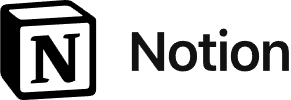 |
| 4.20 out of 5 | |
The project management industry is constantly changing and growing, seeing various developments on the technology front. Keep abreast with the latest project management trends in 2024.
Zoho Projects: Best Overall for Project Planning

What We Liked
- Seamless integration with Zoho solutions
- Efficient communication with project group chat
- Robust time tracking
Where It Falls Behind
- Steep learning curve
- Doesn't offer unlimited storage
- Limited number of project templates
Zoho Projects Monthly Pricing*
- Free: $0 for up to two projects, custom statuses, document sharing, finish-to-start dependency, and 5GB of storage space
- Premium: $5 per user for unlimited projects, project timeline Gantt, task dependencies, time tracking, and 100GB of storage space
- Enterprise: $10 per user for project layout, workflow rules, critical path, milestone custom fields, and 120GB of storage space
- Free trial: 10 days
*Pricing is based on monthly billing. When you choose annual billing, pay only $4 and $9 per user for the Premium and Enterprise plans, respectively.
Zoho Projects is the best overall project management software for small businesses, providing robust task management, team collaboration, and customization features. For task management, it features different task views, including lists, Kanban, and Gantt charts. Create task dependencies to further organize the sequence of activities. Set up the baseline and critical path to evaluate progress over time and ensure you finish the project on time.
For team collaboration, use the built-in chat and @mentions to alert people or groups of people about task updates. Share and store relevant documents. Brainstorm ideas through the platform’s built-in forum. To ensure that your virtual workspaces reflect your actual workflows, take advantage of custom fields, statuses, and views. Write your own code to automate processes and optimize operational efficiency.
While it’s the best small business project management software for project planning, Zoho Projects only offers up to 30 templates. monday.com provides access to over 200 templates, helping different types of businesses get started on various projects quickly.
Zoho Projects Features
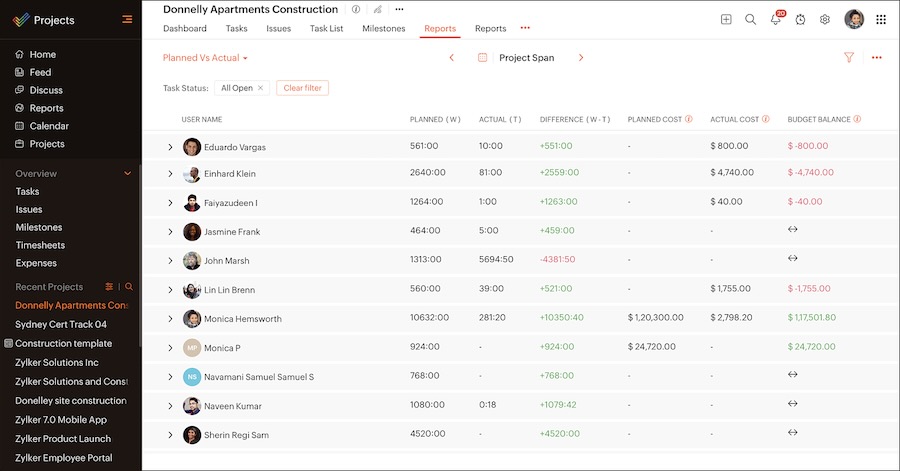
Compare planned and actual costs to manage the project budget better on Zoho Projects. (Source: Zoho Projects)
- Universal Add: Also called Global Add, this feature allows you to quickly add a variety of work items without the hassle of going to the specific modules of the project. These items include tasks, milestones, timesheets, new projects, and forums.
- Web tab: Embed a web URL from a third-party platform into Zoho Projects and secure easy access to related sites and web applications. Name the specific web tab and set permissions for the viewability of specific tabs.
- Planned vs actual hours: Compare the time allotted for each task with the time it actually took to complete them. This helps project managers provide better estimates for clients and stakeholders. Use the available filters to configure the displayed information to month view, project groups, project name, and task status.
Jira: Best for Agile Project Management

What We Liked
- Robust task management capabilities in the free version
- Excellent third-party integrations, connecting with over 3,000 apps
- Highly customizable, allowing businesses to reflect actual workflows
Where It Falls Behind
- Unlimited file storage is locked behind the Premium plan
- Overwhelming for teams working on simple projects
- Technical know-how is necessary to operate the platform
Jira Monthly Pricing*
- Free: $0 for up to 10 users, unlimited projects and issues, multiple project views (board, list, backlog, timeline, and calendar), single-project dependency management, 100 automation rule runs, and 2GB of storage space
- Standard: $8.15 per user for 50,000 users, unlimited email notifications, 1,700 automation rule runs, and 250GB of storage space
- Premium: $16 per user for sandbox, release tracks, project archiving, 1,000 automation rule runs per user, unlimited storage space, and 99.9% uptime guarantee
- Enterprise: Custom pricing for unlimited automation rule runs, customizable analytics dashboards, and 99.95% uptime guarantee
- Free trial: 7 days
*Pricing is based on monthly billing for one to 10 users. Pay $850 and $1,600 a year for the Standard and Premium plans, respectively, when you choose the annual billing arrangement.
Unlike many of the best project management software for small businesses listed in this guide, Jira was originally built for tech teams looking to track bugs in software. This doesn’t limit the platform’s usage to teams focused on agile project management, but its original purpose certainly provides some key advantages to teams within that field.
For example, the software has a drag-and-drop form builder that quickly allows users to better manage and create specific requests. While not as full of view options as ClickUp, Jira Work Management manages to include some key views, such as big-picture views of projects in flight, work allocation views, and dependency views.
Jira has distinct Agile project management support, enabling teams to break down projects into phases. Both Scrum and Kanban have boards with customizable designs, delivering transparency for the entire team.
Still, Jira’s interface is a bit complex, especially for those without technical backgrounds. For an easier-to-set-up experience, the other best small business project management software solutions are more suitable, like monday.com.
Jira Features
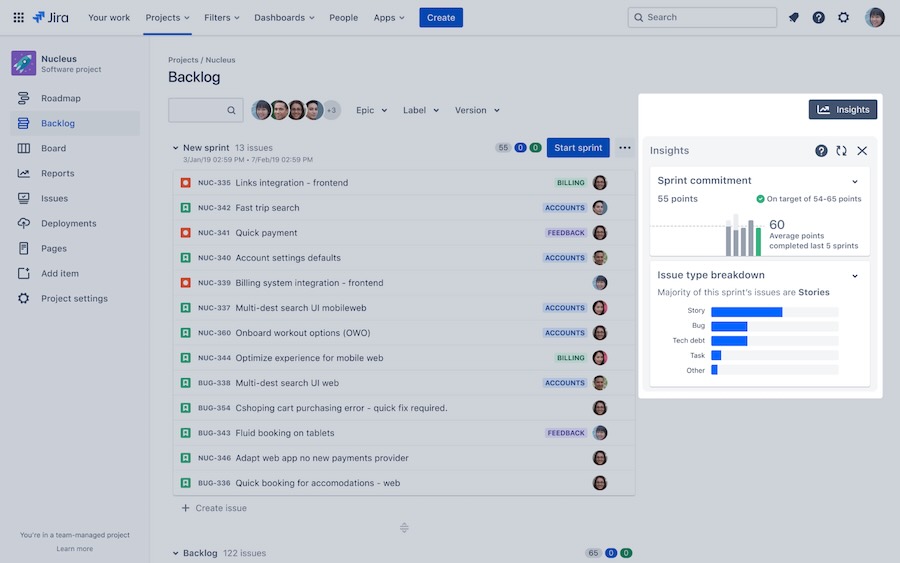
Manage sprints efficiently by tracking backlog issues. (Source: Atlassian)
- Agile development: Jira is focused on agile project management. Use the built-in scrum tools such as Kanban boards, project roadmaps, and backlogs.
- Instant ticket creation: Thanks to its history as a bug-tracking tool, Jira has ticketing functionality for managing these types of issues. This feature effectively allows general users to create tickets for IT professionals within the organization to solve issues that arise. This helps both non-technical and technical team members track progress.
- Automation rules: With its automation rules, the software permits the creation of triggers, conditions, and actions to perform specific tasks automatically. Each rule chain is editable, allowing you to set the scope of each automation task.
According to the latest project management statistics, agile is the dominant project management approach of several organizations, such as information technology and software development companies. Its simple and flexible structure appeals to teams dealing with fast-paced project activities.
Wrike: Best for Resource Management

What We Liked
- Unlimited users in the free version
- Wide range of artificial intelligence (AI) tools
- Option to customize the platform with its branded workspace feature
Where It Falls Behind
- No monthly billing option, like other software providers
- Security features like single sign-on and two-step verification are locked behind the highest-tier plans
- Doesn’t offer unlimited automation actions
Wrike Monthly Pricing
- Free: $0 for unlimited users, multiple project views (table, Kanban, and chart), use case project templates, artificial intelligence (AI)-recommended tasks, and 2GB of storage space for the account
- Team: $10 per user for two to 25 users, custom fields, workflows, and statuses, dynamic Gantt chart, 50 automation actions per seat, and integration with Google Workspace, Office 365, MS Project, Excel, and Slack, and 2GB of storage space per user
- Business: $25 per user for five to 200 users, project portfolio management, AI project risk prediction, 200 automation actions per seat, and 5GB of storage space per user
- Enterprise: Custom pricing for five to unlimited users, business intelligence application programming interface (API), single sign-on, 1,000 automation actions per seat, and 10GB of storage space per user
- Pinnacle: Custom pricing for advanced analytics and data visualizations, resource bookings, locked spaces, 1,500 automation actions per seat, and 15GB of storage space per user
- Free trial: 14 days
Wrike is the best project management software solution for teams that want to strictly monitor time, budget, and labor thanks to its robust resource management tool. Its Resource View provides an overview of all the resources to be used in a project. This enables you to see if you have enough bandwidth and make adjustments to balance resources across different projects.
The workload charts help distribute tasks equitably among team members and pivot priorities based on the team’s workload. This tool works hand in hand with the resource assignment, which lets you drag and drop tasks to add or move assignments. On top of these, Wrike features time tracking and timesheets. Given all these capabilities, this provider is the best project management software for resource planning, scheduling, and optimization.
The downside of choosing Wrike is that you’re locked into an annual billing arrangement since it doesn’t offer a monthly billing option. All the other project management solutions listed here have monthly billing. Zoho Projects is the most affordable, with a monthly entry-level plan fee of $5 per user.
Wrike Features
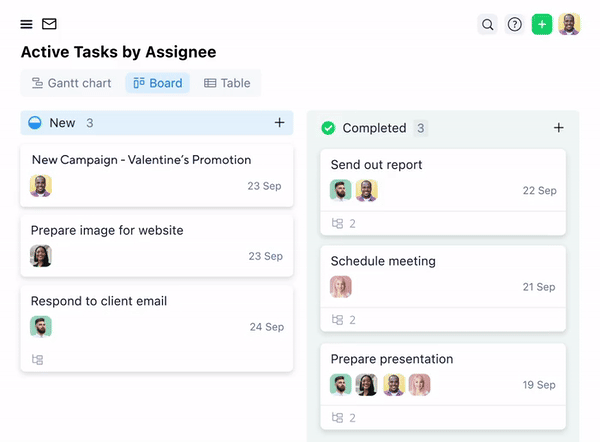
Create forms to organize your request intake workflows. (Source: Wrike)
- Custom request forms: Organize the request intake process by creating a request form containing custom fields and questions relevant to your workflow. The platform’s service request forms feature checkboxes, drop-downs, short answers, choice of date, and importance level.
- File proofing and approval: Provide feedback on documents, images, videos, and web pages. Write your comment directly on the files to offer better context about what you want to be improved.
- Dashboards: Analyze project activities to implement strategic changes in your workflows. Depending on the widgets you add to the board, you’ll see graphs and charts showing objectives and key results by status, tasks due for the week, number of projects by assignee, and completion progress.
Wrike is one of our top picks for the best project management software for nonprofits, given its advanced campaign planning tools. If you manage an advocacy group, refer to the article for other software solutions.
ClickUp: Best for Team Collaboration

What We Liked
- Unlimited file storage in the entry-level plan
- Generous offerings in the free version
- Easier task management with bulk action toolbar
Where It Falls Behind
- AI tool requires an add-on fee
- Complicated customization process
- Natively integrates with over 50 third-party solutions only
ClickUp Monthly Pricing*
- Free: $0 for unlimited tasks, 60 uses of custom fields, multiple project views (list, board, calendar, and 60 uses of Gantt, timeline, and workload), 50 active automation rules, 100 automation executions, and 100MB of storage space
- Unlimited: $10 per user for 100 uses of timeline, workload, and map views, custom task types, 500 active automation rules, 1,000 automation executions, and unlimited storage space
- Business: $19 per user for pinning custom fields, custom task IDs, unlimited active automation rules, 10,000 automation executions, and private docs
- Enterprise: Custom pricing for universal search, white labeling, conditional logic on forms, and team sharing
*Pricing is based on monthly billing; save 30% by paying annually.
ClickUp is the best project management software for small businesses with team members frequently communicating with each other for workflow efficiency. The provider offers native team collaboration tools, allowing users to discuss project tasks directly on the platform. This removes the need to use a third-party communication app.
Its chat functionality lets you start conversations with team members in real time. Embed webpages, spreadsheets, and other types of content in messages to clarify project task discussion. Use Clips to record screen activities and illustrate processes and steps better. If you want to formalize requests and reminders for to-dos, send emails directly within the tasks on the team management app.
Other collaboration tools include assigning comments, delegating reminders, proofing and annotation, and private docs. Although ClickUp is among the best project management tools for small businesses strengthening collaboration, it falls short on third-party integrations. It only connects with 50-plus tools. Jira, on the other hand, connects with over 3,000 third-party apps.
ClickUp Features

Get an overview of what each team member is working on using ClickUp’s team view. (Source: ClickUp)
- Team view: Team view provides a representation of each person in your workspace as well as for unassigned tasks. Every person’s box will present their assigned workloads. Drag and drop tasks to where they need to be. If a teammate is too busy for a specific task, send it to another colleague. Tasks are even grouped by status so that redelegation is easy.
- Command Center: Search for different project elements, including spaces, tasks, folders, lists, comments, and dashboards. Apply filters, like assignees, creators, and statuses, to sort through results easily.
- Mind map: Illustrate workflows better by connecting ClickUp tasks to the mind map. As you get an overview of the entire project, determine dependencies and drag-and-drop elements to recalibrate the workflows.
monday.com: Best for Customizability

What We Liked
- 200-plus templates help users get started quickly
- Easy-to-use interface thanks to its visual appeal
- Intuitive automation builder
Where It Falls Behind
- Requires a minimum of three seats for the paid subscription
- Entry-level plan doesn't offer automations and integrations
- Doesn't have an internal chat feature
monday.com Monthly Pricing*
- Free: $0 for a maximum of two users, embedded documents, Kanban view, one week of activity log, and 500MB of storage space
- Basic: $12 per user for unlimited users, boards, and documents, custom fields, and 5GB of storage space
- Standard: $14 per user for multiple project views (timeline, calendar, and map), six months of activity log, 250 automation and integration actions, and 20GB of storage space
- Pro: $24 per user for time tracking, workload view, one year of activity log, 25,000 automation and integration actions, 100GB of storage space
- Enterprise: Custom pricing for five years of activity log, 250,000 automation and integration actions, 1,000GB of storage space, 99.9% uptime guarantee, and compliance with Health Insurance Portability and Accountability Act (HIPAA) standards
- Free trial: 14 days
*Pricing is based on monthly billing; save 18% by paying annually.
monday.com’s work management tools are a leader in project management for a reason. Right out of the gate, new users of monday.com are presented with a series of brief questions. This helps the software customize the overall experience so that utilizing the platform is made much easier. You’re presented with an entirely customizable dashboard that represents your company, its size, and its industry.
The software solution incorporates daily webinars for users as well as a robust knowledge base, giving users context and support for any issues that might crop up. Agents are available 24 hours a day, 365 days a year, so users will feel very supported.
In fact, the overall user experience is some of the best in the industry. Assigning tasks is easy thanks to the crisp and colorful user interface with enough visual indicators to make things quickly decipherable at a glance. Because of its highly customizable and intuitive platform, monday.com earned a spot in our list of the best project management software for individuals.
One disadvantage of choosing this software solution is that it falls a bit behind when it comes to guest access. It’s not available on the free or first-tier paid plan. For this feature in a free plan tier, consider Notion, one of the best programs for project management listed in this guide.
monday.com Features
Monitor the hours spent on each task using monday.com’s time tracking.
(Source: monday.com)
- Task management: Projects are created using a spreadsheet-like tool. Each row is a new task, and each column is a new data point you can track, such as assignee, budget, due date, location, or anything else you wish to add. Once created, you can visualize projects in many different ways, including a timeline and Gantt chart, Kanban board, calendar, and interactive map.
- Time tracking: The feature monitors the time spent on a task. Simply click the play button next to a task to begin recording time and the pause button to stop.
- Forms: Integrate web forms into your project management. When somebody submits an order form or support ticket, you can automatically send the details to monday.com and initiate a new task.
Asana: Best for Free Project Management

What We Liked
- Base-tier plan features dependencies and milestones
- Robust third-party integrations, connecting with over 300 apps
- AI tools don’t require additional fees
Where It Falls Behind
- Doesn’t have a native map view, like other providers
- Expensive entry-level subscription package
- Slow customer support response
Asana Monthly Pricing*
- Personal: $0 for unlimited projects, tasks, comments, and activity logs, multiple project views (list, board, and calendar), and integrations with 100-plus apps
- Starter: $13.49 per user for smart status and summaries, timeline and Gantt views, custom templates, task dependencies, and 250 automation actions
- Advanced: $30.49 per user for goals, 100 portfolios, proofing and approvals, and 25,000 automation actions
- Enterprise: Custom pricing for workflow bundles, universal workload, integrations with Salesforce, Tableau, and Power BI, and custom branding and onboarding
- Enterprise+: Custom pricing for managed workspaces, app management, and data loss prevention integration
- Free trial: 30 days
*Pay only $10.99 and $24.99 per month, respectively, when you choose annual billing.
Asana is our top choice of project management software for small businesses looking for a free platform. Its free version is packed with robust tools for implementing and monitoring project activities. You’re allowed to create as many projects, add as many tasks, and assign as many team members as you want.
Additionally, it features unlimited comments, due dates, and messages. With Asana’s unlimited activity logs, you can see all the activities for all durations of time. There’s no need to filter which files to upload and store since the platform offers access to unlimited storage, with a 100MB limit per file.
In terms of project views, Asana’s free version features lists, boards, and calendar views. Project overview, which displays project roles, key resources, milestones, and the progress tracker, is likewise available without any cost.
While Asana is a great free project management tool, its entry-level plan is in the expensive range, charging $13.49 per user, per month. Zoho Projects is still the most affordable option, especially when you choose the annual billing arrangement, which lowers the subscription to $4 per user, monthly.
Asana Features
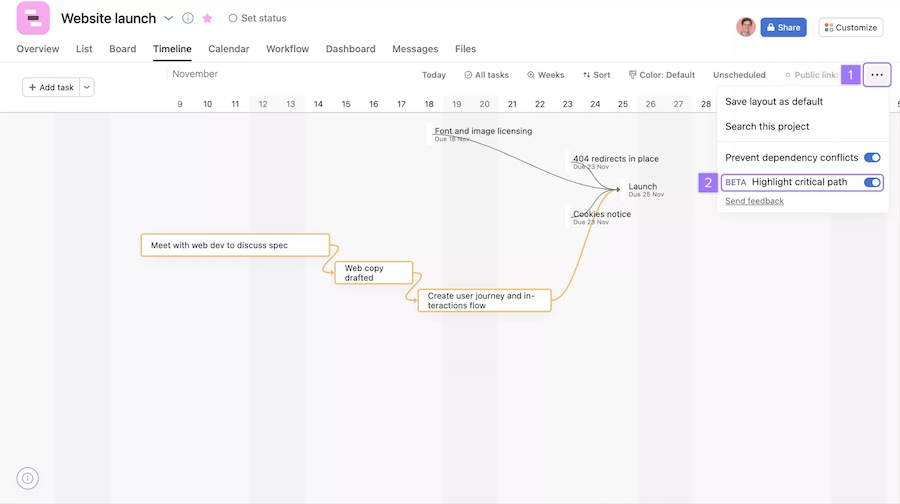
Quickly view your project’s most important tasks using Asana’s critical path. (Source: Asana)
- Critical path: This shows your project’s longest chain of dependent tasks. With an overview of your most important project activities, it’s easier to forecast roadblocks and completion time.
- Messages: Directly coordinate with team members by sending a message on Asana. Embed links of tasks to the message to provide better context to your instructions.
- Recurring tasks: If you have repetitive to-dos, say, sending reports to team members every week, you can set the frequency of tasks on Asana. The options include daily, weekly, monthly, yearly, and periodically. The system automatically sends an alert when the task is due.
Notion: Best for Content Production

What We Liked
- Easily customizable thanks to content blocks
- Integrates with over 80 third-party apps
- Extensive tutorials facilitating ease of use
Where It Falls Behind
- Only allows a month of page history in the entry-level plan
- AI tool requires an additional fee
- Automations are still wonky
Notion Monthly Pricing*
- Free: $0 for a limited block trial for more than two users, seven days of page history, multiple project views (timeline, boards, and calendar), basic automations, and 5MB of file uploads
- Plus: $10 per user for unlimited pages and blocks, 30 days of page history, custom automations, custom Notion site, and unlimited file uploads
- Business: $18 per user for private teamspaces, 90 days of page history, export entire workspace as PDF, and single sign-on
- Enterprise: Custom pricing for unlimited page history, advanced teamspace permissions, workspace analytics, and compliance with HIPAA standards
*Pay only $8 and $15 for the Plus and Business plans, respectively, when you choose annual billing.
Notion is the best software for project management focused on content creation. At its core, the platform is a text editor, with its basic element, the content block, enabling you to add pages, headings, bulleted and numbered lists, quotes, and other types of content. Collaborating on content is extremely easy, as it allows users to edit documents in real time, simultaneously. You’ll see team members’ avatars or profile pictures next to any block they’re working on.
On top of the real-time collaboration, Notion lets you add comments and reminders and react to them with emojis. To alert a team member about important feedback, @mention them in your comment. You may also reference a page or a date through @mention.
Finally, Notion is the best platform for content production precisely because it lets businesses publish content on a custom website. When you publish a page on the web, it’s like any other searchable web page, complete with links. Unfortunately, Notion charges an extra fee for the use of its AI tool. Other project management solutions, like Wrike, include AI in their free and paid subscription plans.
Notion Features
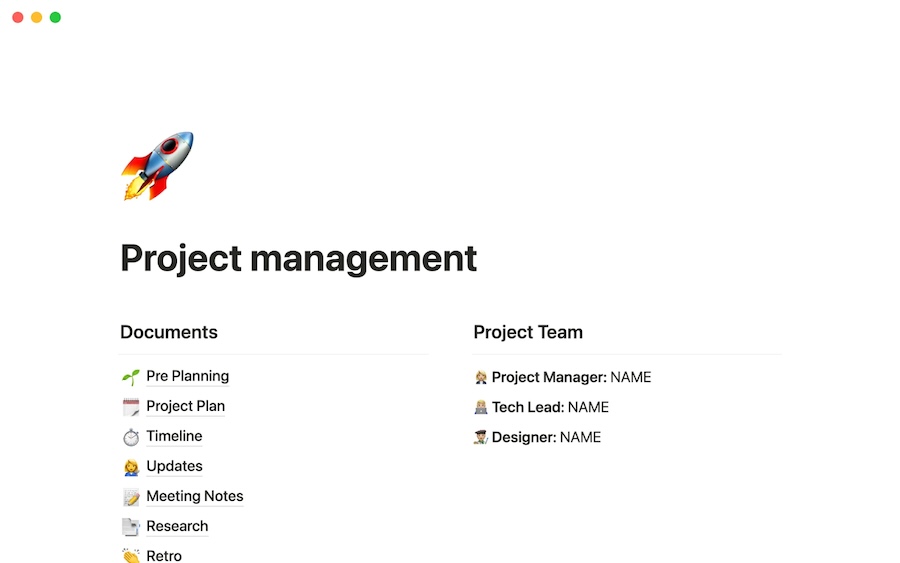
Get started with Notion using its project management templates. (Source: Notion)
- Wiki: Through Notion’s block-based interface, it’s easy to craft wikis for your projects. This gives team members a simple way to see practices for the project, review meeting notes, and view instructional videos for tasks.
- Advanced note tracking: With blocks, users can quickly add notes to any Notion project. This is easily organized through views in the platform, such as list view.
- Starter templates: Notion has hundreds of starter templates that allow you to create tasks that are predesigned based on the type of work. Examples include a content deliverables template, a company values template, Kanban boards, and Scrum templates.
How We Evaluated the Best Project Management Software
A project management software solution delivers a means to manage tasks and team members on specific projects. It facilitates accurate time tracking and project scheduling for the purposes of clients. For this guide, we evaluated various solutions based on cost, general and niche features, customer support, and performance for both experts and everyday users.
Click on the tabs below to learn how we evaluated the best project management software for small teams:
20% of Overall Score
We compared subscription prices of project management software, including the availability of a free plan or cheaper annual pricing. For each solution, we considered a baseline per user price point of $15 a month for the first paid tier as well as a $25 baseline for the second tier and higher.
25% of Overall Score
This is where many small businesses pay the most attention. For general features, we asked whether each project management software option had tools for project planning and scheduling, task management, and reporting. We checked if it features multiple project views and calendar sync.
20% of Overall Score
Some businesses require specific tools for specific project needs. That said, for the advanced features, we looked for premium offerings, such as time tracking, budget monitoring, resource management, and team dashboard. In addition, we gauged how secure the platform is.
10% of Overall Score
Some teams don’t have a dedicated IT organization, so having a project management suite that’s easy to set up and use is critical. For this reason, we evaluated whether a solution required a high technical skill to use and implement and also evaluated how intuitive the interface is.
10% of Overall Score
For most users, help is critical when something goes wrong, so we evaluated the support structures of each provider. With this, a business knows what to expect if they need assistance with some aspect of the software. We checked for the availability of phone, email, and live chat support and gave more points to providers operating 24/7.
15% of Overall Score
We calculated our expert score by identifying standout features that deliver the best value for money. We also checked out the popularity of each provider and how easy it was to incorporate their solutions into existing processes. Users’ perception was likewise important, so we included that factor in our evaluation.
Frequently Asked Questions (FAQs)
Project management is important because it allows individuals to keep track of the tasks they need to accomplish. Knowing what is on your plate for the day or the week allows you to manage your time better. It also provides teams with a window to see where the project stands in the overall process. With this, teams ultimately collaborate more effectively by employing project management strategies.
There are four main types of project management software that can be used to streamline processes for different projects. These include:
- Individual: A single application that can manage spreadsheets, tasks, and tools.
- Collaborative: An option that allows teams to collaborate. This is highly customizable, but it may have difficulties processing concurrent data input.
- Integrated: This software integrates information and allows users to access it through a central dashboard, which is ideal for analyzing data.
- Cloud-based: This is a software app that is hosted in the cloud. Multiple people can access it simultaneously, and the app can be customized to your individual liking.
The tools you will look for in project management software will vary based on your business’ needs. With that said, the most commonly used tools include:
- Project views: Typically, software solutions feature list, board, calendar, Kanban, and timeline views.
- Collaboration tools: Some platforms allow you to embed files in tasks, while others feature whiteboards for sharing of ideas.
- Storage space: Some systems offer limited storage per account or per user. Others have unlimited storage space, which benefits teams that use documents heavily on projects.
- Resource management tools: These include workload charts and time tracking, offering insight into how resources are spent and should be distributed.
- Workflow automation: While others have unlimited automation actions, some have a certain number of actions you can implement in a month.
Bottom Line
Project management helps teams stay on track and gives managers high-level and detailed views of key tasks and activities. To work effectively for your team’s needs, the best project management software for small business needs to handle all the specific tasks your business deals with. It has to be easy to use and something your team members can easily adopt in their daily routines.
For this guide, we’ve determined Zoho Projects is the current best option for small businesses looking for task organization and management. It integrates seamlessly with Zoho products, effectively extending its functionality. Moreover, it provides features like time tracking, cloud storage, and team chat, and stands out for its simple-to-use interface. Paid plans offer a 10-day trial without the need for a credit card. Click on the button below for more details.